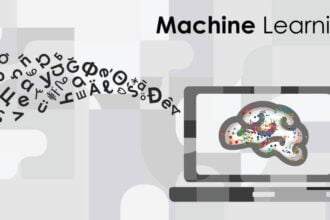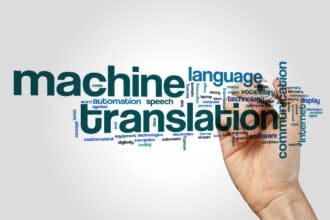Big data technology has been instrumental in helping organizations translate between different languages. We covered the benefits of using machine learning and other big data tools in translations in the past. However, big data often encapsulates using constantly growing data sets to determine business intelligence objectives, such as when to expand into a new market, which product might perform overseas, and which regions to expand into.
Below we’ll go over how a translation company, and specifically one that provides translations for businesses, can easily align with big data architecture to deliver better business growth.
How Does Big Data Architecture Fit with a Translation Company?
Big data architecture lays out the technical specifics of processing and analyzing larger amounts of data than traditional database systems can handle. This means that it can be very useful for handling translations. According to the Microsoft documentation page, big data usually helps business intelligence with many objectives. Some of the variables that need to go into creating a data-driven translation process include:
- Data sources: where the data comes from, like devices, application files or databases
- Data storage: simply put, this is where the data is stored, usually in file stores that hold massive amounts of data in varying formats
- Batch processing: this is where the data sets are prepared for analysis in batches, usually reading files, processing them and creating new files
- Real-time message ingestion: for data that is continually updating, this part of the process captures and stores those messages in folders
- Stream processing: this part prepares real-time messages for analysis
- Analytical data store: in this step, processed data is put into a structured format for analytical tools to access
- Analysis and reporting: interpretation of the data comes into play in this step, often with the use of a data modelling layer or interactive data exploration
- Orchestration: this process integrates the steps above using workflows
What does translation have to do with this incredibly complex process? Well, if your company wants to use big data architecture to try to figure out which foreign markets to expand into, that will affect which data sources you’re pulling from. Big Data Analytics News has hailed big data as the future of the translation industry.
You might use predictive analysis-based data that can help you analyse buying trends or look at how the business might perform in a range of new markets. Sometimes big data models can look at which keywords and topics are trending on social media and, as translation company Tomedes points out, that can involve multiple languages. This is where blending business translation with your big data architecture via the services of a translation company really comes into its own. Your data sources can also include looking at data from the sales process, such as demographic surveys, store inventory and POS data, and well as credit card monitoring – all in one or more languages.
Using a Translation Company with Your Big Data Strategy
It’s important to build translation considerations into your big data strategy. This is the massive, all-organizational plan that tells the business how it will run as a data-driven operation. As such, the big data strategy might:
- Act as the first stage in data-driven planning across the whole organization
- Lay out the principles that keep big data at the centre of operations, irrespective of the language it’s in
- Help the business establish certain goals with big data
In short, the big data strategy makes sure all departments of the organization are using the data in the same way, thus avoiding fractured planning across the organization.
One of the main areas that the big data strategy covers is which data the company will use and how it will act on the information. That’s the data source part of the big data architecture. In addition to the sales process data mentioned above, big data could come from employee tables, contact information forms, email usage stats, healthcare wearables and even traffic flow monitoring. If it happens, technology can monitor it.
Since big data strategies are massive plans that touch every part of the organization, if the company operates or plans to operate in multiple regions, that data could be coming from areas that speak different languages. So, you may need to include a translation company as part of the big data strategy to make sense of all of the data that you’re gathering. An example is if demographic surveys are conducted in another language. A good translation company can help you make sense of data from other languages, be it numerical formats or other languages that describe the data.
Further, big data itself incorporates working with growing amounts of data these days. It’s overwhelming just how fast our data is growing. Even by 2013, 90% of the data in the world had been generated within the previous two years. That’s just staggering.
In 2020, it was estimated that each person generated 1.7 megabytes of data per second. With how much data we have to sort through, how it’s displayed so you can make sense of it has never been more important. A good translation company can help you to consider how to display the data in order to get the most out of it. Many agencies handle business translation documents like business reports, analytics documents or financial statements, which often outline the data collected through the organization.
How to Find a Quality Translation Company
How do I choose a translation business? It’s a commonly asked question. Most people start by asking around their professional network or looking online and searching for the type of translation services they need. What are the types of translation? You might look up business translation, marketing translation, social media translation, legal translation or technical translation.
Once you have a shortlist of potential translation companies to work with, check their background by asking to see examples of recent work that they have completed. Also, grill them on their relevant experience. You can prepare a list of questions to make sure they can work on big data-related projects and have experience of doing so prior to their involvement with your business. Some examples of these questions might include:
- Have you completed any projects related to translating big data documents?
- Have you ever helped a company expand into a new region using big data analysis?
- How do you ensure the quality of big data-related documents? (Ideally, the company should have multiple stages of review and always used native speakers of the target language.)
Remember, a good translation company will be professional and forthcoming in answering such questions – you should feel confident in their skills and knowledge. If doubts remain, go back to your shortlist. Translation quality is never something on which you should compromise.











